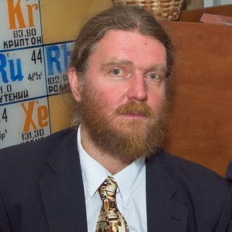Arctic Mineral Resources: Science and Technology
A special issue of Minerals (ISSN 2075-163X). This special issue belongs to the section "Crystallography and Physical Chemistry of Minerals & Nanominerals".
Deadline for manuscript submissions: closed (1 January 2019) | Viewed by 98616
Special Issue Editor
2. Department of Crystallography, Institute of Earth Sciences, St. Petersburg State University, University Emb. 7/9, 199034 St. Petersburg, Russia
Interests: mineralogy; crystallography; structural complexity; uranium
Special Issues, Collections and Topics in MDPI journals
Special Issue Information
Dear Colleagues,
The Arctic zone of the Earth is a major source of mineral resources for the future development of science and technology. It contains a large supply of strategic mineral deposits, including rare earths, copper, phosphorus, niobium, platinum-group elements, and other critical metals. The continuing melting of the sea ice due to the climate change makes these resources more accessible than in the past. However, the mineral exploration in the Arctic has always been a challenge, due to the climatic restrictions, remote location and vulnerability of Arctic ecosystems. This Special Issue will cover a broad range of topics related to the problem of Arctic mineral resources, including geological, geochemical and mineralogical aspects of their occurrence and formation, chemical technologies, environmental and economic problems of mineral exploration. We invite contributions dealing with various issues associated with mineralogical, geochemical and environmental problems of mineral exploration in the Arctic, chemical technologies, economical, historical and political aspects of the role of Arctic mineral resources in the future industrial and technological development.
Prof. Dr. Sergey V. Krivovichev
Guest Editor
Manuscript Submission Information
Manuscripts should be submitted online at www.mdpi.com by registering and logging in to this website. Once you are registered, click here to go to the submission form. Manuscripts can be submitted until the deadline. All submissions that pass pre-check are peer-reviewed. Accepted papers will be published continuously in the journal (as soon as accepted) and will be listed together on the special issue website. Research articles, review articles as well as short communications are invited. For planned papers, a title and short abstract (about 100 words) can be sent to the Editorial Office for announcement on this website.
Submitted manuscripts should not have been published previously, nor be under consideration for publication elsewhere (except conference proceedings papers). All manuscripts are thoroughly refereed through a single-blind peer-review process. A guide for authors and other relevant information for submission of manuscripts is available on the Instructions for Authors page. Minerals is an international peer-reviewed open access monthly journal published by MDPI.
Please visit the Instructions for Authors page before submitting a manuscript. The Article Processing Charge (APC) for publication in this open access journal is 2400 CHF (Swiss Francs). Submitted papers should be well formatted and use good English. Authors may use MDPI's English editing service prior to publication or during author revisions.
Keywords
- Arctic zone
- mineral resources
- mineralogy
- geochemistry
- chemical technology
- strategic mineral deposits
- critical metals
- advanced materials
- economics






